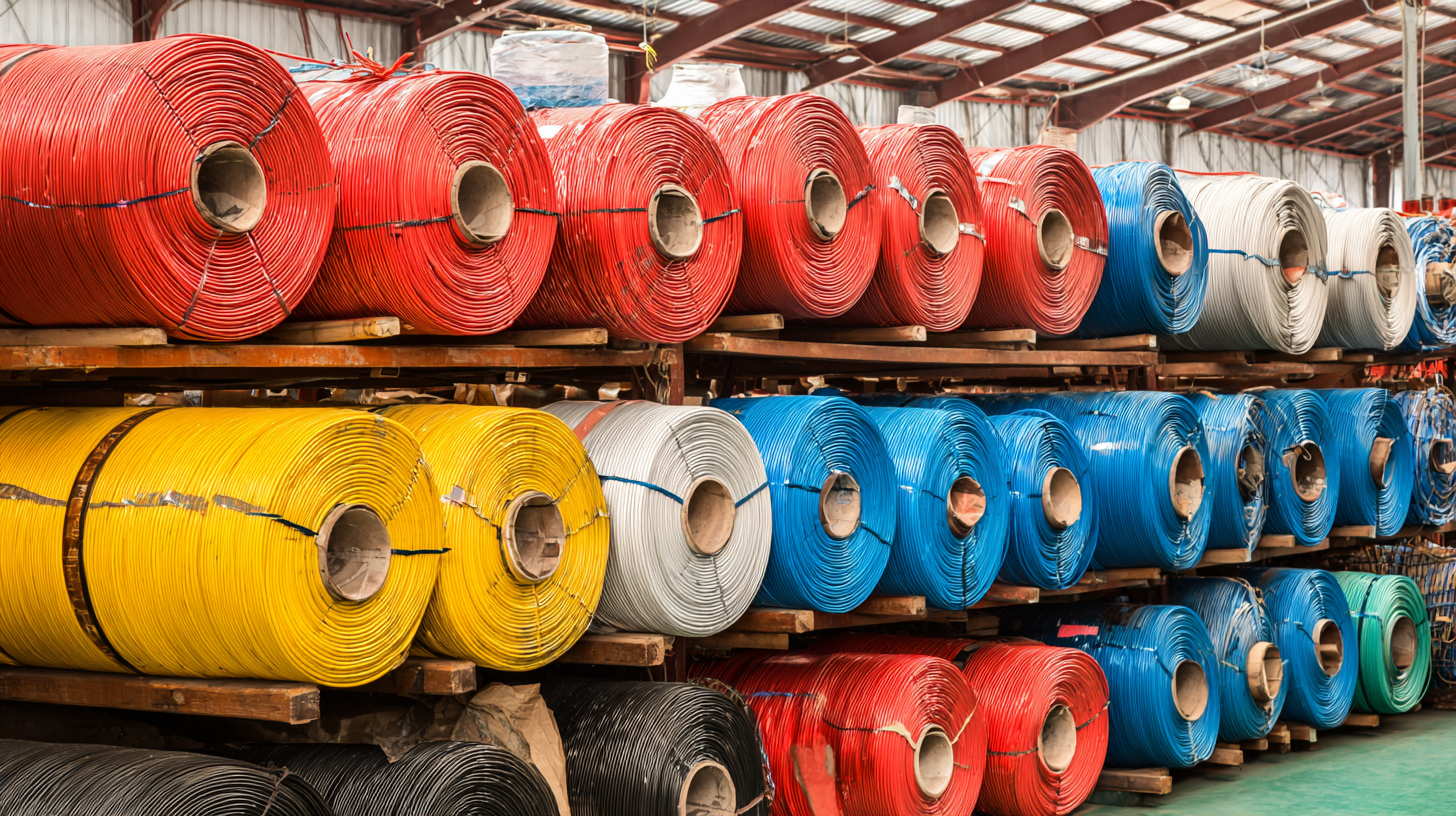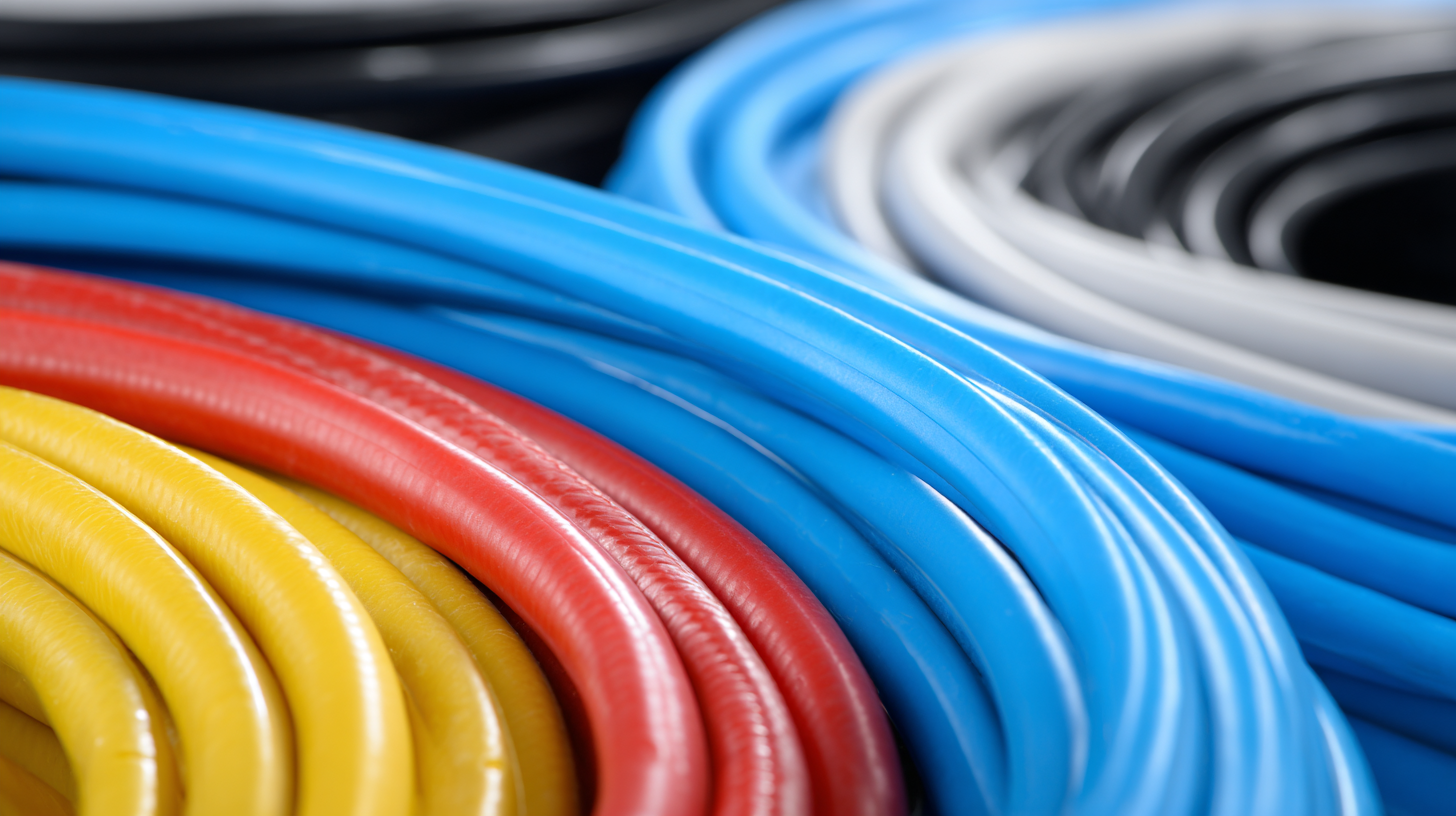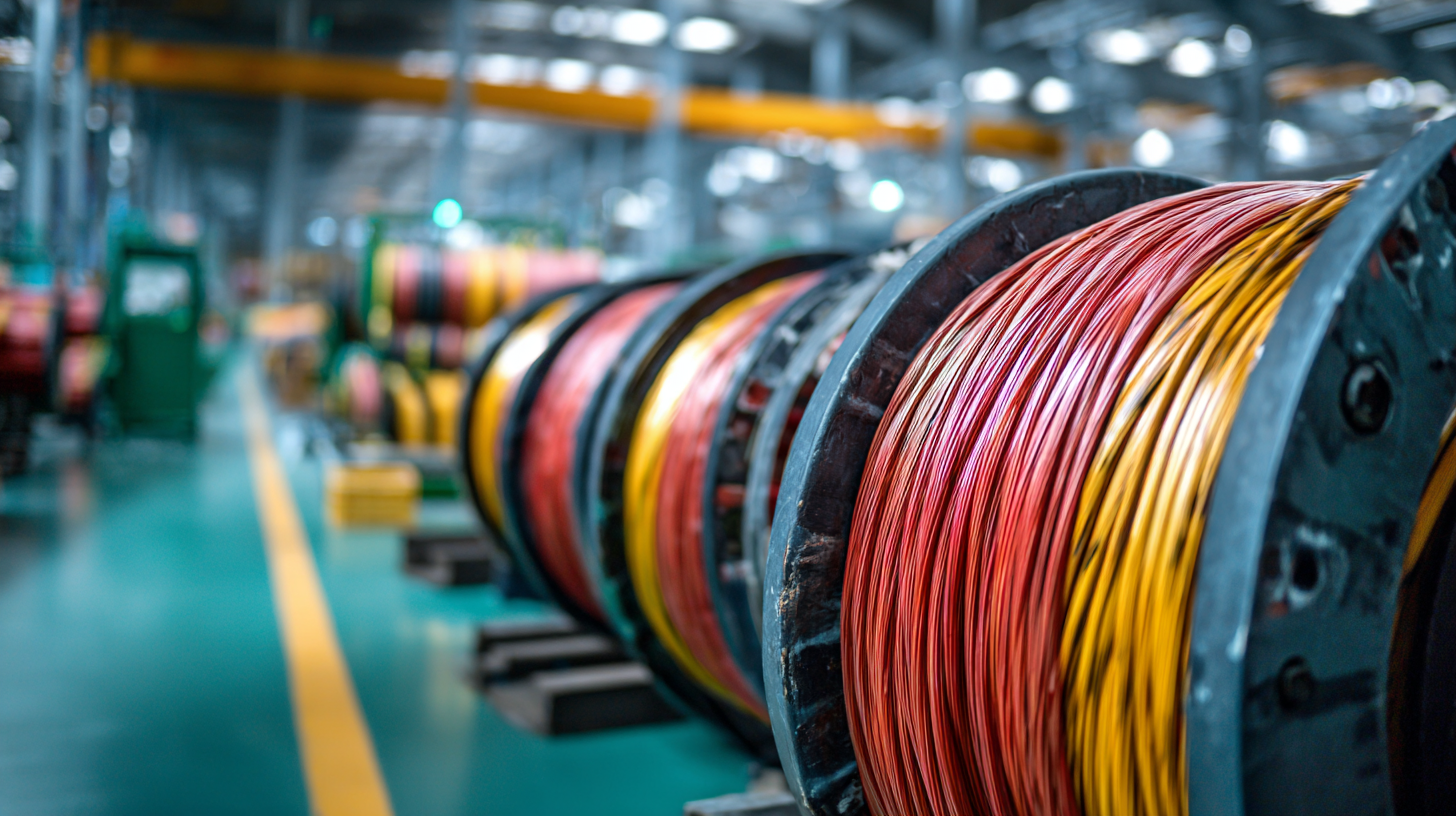Understanding Import Export Certifications for Best Rubber Flexible Cable in the Global Market
The global market for Rubber Flexible Cable has seen significant growth, driven by advancements in technology and increasing demand across various industries. According to a recent report by Grand View Research, the rubber cable market is projected to reach USD 15 billion by 2025, expanding at a compound annual growth rate (CAGR) of 9.5% from 2019 to 2025. These cables are essential in applications ranging from automotive to renewable energy, necessitating compliance with various import-export certifications to ensure safety and performance standards. As businesses seek to tap into international markets, understanding these certifications becomes crucial for competitive positioning. In this blog, we will explore industry application cases of Rubber Flexible Cable and provide a step-by-step guide on navigating the certification process.

Key Import and Export Certifications for Rubber Flexible Cables
When dealing with rubber flexible cables in the global market, understanding key import and export certifications is essential for ensuring compliance and maintaining product quality. Certifications such as UL (Underwriters Laboratories), CE (Conformité Européene), and RoHS (Restriction of Hazardous Substances) play a crucial role in determining whether a product meets safety and environmental standards across various countries. These certifications not only facilitate smoother customs processes but also enhance consumer trust in the product's reliability and safety.
Tip: Always verify the certifications required for your target markets before exporting. Different regions have specific regulations that cater to safety and environmental concerns. Staying informed about these requirements can help avoid costly delays and non-compliance issues.
Another important certification to consider is ISO (International Organization for Standardization) standards, which assure a quality management system that enhances operational efficiency and customer satisfaction. It is imperative for manufacturers to focus on obtaining these certifications, as they can significantly influence buyer preferences in a competitive marketplace.
Tip: Partnering with a reputable certification body can streamline the process and provide insights into best practices that can improve your products' competitiveness while ensuring adherence to stringent quality standards.
Understanding Import Export Certifications for Best Rubber Flexible Cable in the Global Market - Key Import and Export Certifications for Rubber Flexible Cables
| Certification Name | Issuing Authority | Purpose | Region Applicable | Validity Period |
|---|---|---|---|---|
| IEC 60227 | International Electrotechnical Commission | Standard for PVC insulated cables | Global | N/A |
| UL 83 | Underwriters Laboratories | Standards for conductors | North America | Lifetime of the product |
| RoHS Certification | European Union | Restrictions on hazardous substances | European Union | N/A |
| CE Marking | European Commission | Compliance with health, safety, and environmental protection standards | European Economic Area | N/A |
| ISO 9001 | International Organization for Standardization | Quality management systems | Global | 3 years |
Importance of Quality Standards in Global Trade of Rubber Cables
 In the global trade of rubber cables, adhering to quality standards is of paramount importance. Quality certifications serve as a benchmark for manufacturers and importers, ensuring that the products meet specific safety and performance criteria. Rubber flexible cables are utilized in various applications, from construction and industrial use to household appliances, making it crucial that they meet international quality expectations. These standards help mitigate risks associated with electrical failures, environmental hazards, and safety concerns, providing both manufacturers and consumers with confidence in the product’s reliability.
In the global trade of rubber cables, adhering to quality standards is of paramount importance. Quality certifications serve as a benchmark for manufacturers and importers, ensuring that the products meet specific safety and performance criteria. Rubber flexible cables are utilized in various applications, from construction and industrial use to household appliances, making it crucial that they meet international quality expectations. These standards help mitigate risks associated with electrical failures, environmental hazards, and safety concerns, providing both manufacturers and consumers with confidence in the product’s reliability.
Moreover, compliance with established quality standards can significantly enhance a company's reputation in the global market. Businesses that prioritize certifications not only gain a competitive edge but also attract a more extensive customer base. Importers are often required to provide proof of compliance with these certifications, as they help streamline the import process and facilitate smoother trade relations. Thus, for manufacturers of rubber flexible cables, investing in quality assurance is not merely a regulatory requirement but a strategic decision that can lead to increased market penetration and customer trust.
Navigating Regulatory Requirements for International Cable Transactions
Navigating the regulatory landscape for international transactions involving rubber flexible cables can be complex, given the myriad of certifications and compliance requirements that vary from country to country. Import and export certifications play a crucial role in ensuring that products meet safety, performance, and environmental standards set by different government bodies. For manufacturers and exporters of rubber flexible cables, understanding these regulations is essential to avoid costly delays and penalties.
One key aspect of compliance is obtaining the necessary certifications such as IEC, UL, or CE marks, which not only facilitate market access but also enhance product credibility. Each certification involves rigorous testing and documentation that demonstrate the product's adherence to safety and quality requirements. Additionally, staying updated on changes in regulations, such as those related to environmental standards and trade agreements, is vital for companies looking to maintain a competitive edge in the global market.
Moreover, businesses should be aware of the implications of regulatory compliance on logistics and supply chain management. Effective communication with customs and import authorities, along with proper documentation, can streamline the process and mitigate risks. By prioritizing compliance and understanding the nuances of regulatory requirements, companies can successfully navigate the complexities of international cable transactions while ensuring the best practices are upheld in the trade of rubber flexible cables.
Impact of Certifications on Market Competitiveness for Rubber Cables
In the global market for rubber cables, certifications play a crucial role in determining market competitiveness. With the rising demand for safety and quality assurance, compliance with international standards has emerged as a differentiator among manufacturers. According to a recent industry report, products that meet ISO standards can see a price increase of up to 15%, as consumers tend to associate certification with higher quality. This trend is particularly significant as countries tighten regulations on imported goods to protect consumers from hazardous products.
For instance, the South Korean government's recent move to impose stricter regulations on imported goods, particularly from e-commerce platforms, highlights the growing concern around product safety and certifications. The demand for certified rubber flexible cables is expected to grow by 20% over the next five years, as businesses and consumers alike prioritize compliance with safety regulations. By focusing on obtaining relevant certifications, manufacturers can enhance their market position and cater to the increasing consumer preference for quality assured products.

Common Certification Bodies and Their Roles in Cable Exports
In the global market for rubber flexible cables, adhering to import-export certifications is essential for ensuring product safety and compliance with international standards. Certification bodies play a critical role in facilitating this process by establishing stringent guidelines that manufacturers must follow. Organizations such as the International Electrotechnical Commission (IEC) and Underwriters Laboratories (UL) are pivotal in evaluating and certifying cables, helping manufacturers demonstrate that their products meet safety and performance standards. According to a report by Grand View Research, the global flexible rubber cables market is projected to reach USD 9.8 billion by 2027, underlining the importance of compliance with these certifications to access lucrative international markets.
Certification processes vary across regions but consistently focus on the hazardous and environmental impact of materials used in cables. The European Union’s REACH regulation mandates that manufacturers ensure their products do not contain harmful substances. Similarly, the RoHS directive restricts the use of specific hazardous materials in electrical and electronic equipment. Such regulations not only enhance product quality but also protect consumers and reduce environmental risks. As reported by MarketsandMarkets, the demand for certified rubber cables is spurred by the increasing emphasis on environmental sustainability and safety protocols across various industries, making it crucial for manufacturers to navigate the complexities of certification effectively.
